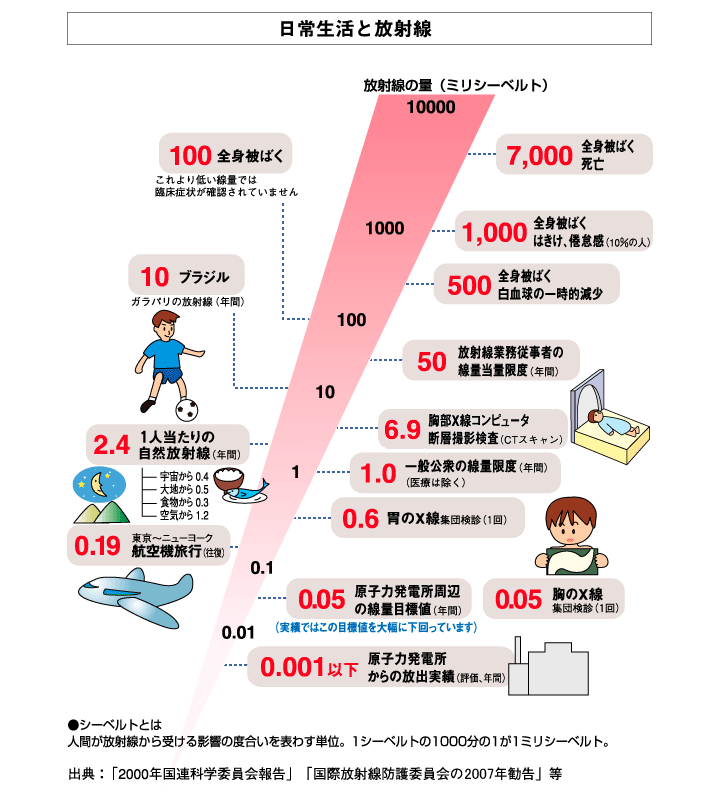SOURCE: IAEA
Radiation Dose Rates Observed at the Site
The Japanese authorities have informed the IAEA that the following radiation dose rates have been observed on site at the main gate of the Fukushima Daiichi Nuclear Power Plant.
At 00:00 UTC on 15 March a dose rate of 11.9 millisieverts (mSv) per hour was observed. Six hours later, at 06:00 UTC on 15 March a dose rate of 0.6 millisieverts (mSv) per hour was observed.
These observations indicate that the level of radioactivity has been decreasing at the site.
As reported earlier, a 400 millisieverts (mSv) per hour radiation dose observed at Fukushima Daiichi occurred between units 3 and 4. This is a high dose-level value, but it is a local value at a single location and at a certain point in time. The IAEA continues to confirm the evolution and value of this dose rate. It should be noted that because of this detected value, non-indispensible staff was evacuated from the plant, in line with the Emergency Response Plan, and that the population around the plant is already evacuated.
About 150 persons from populations around the Daiichi site have received monitoring for radiation levels. The results of measurements on some of these people have been reported and measures to decontaminate 23 of them have been taken. The IAEA will continue to monitor these developments.
Evacuation of the population from the 20 kilometre zone is continuing. The Japanese have asked that residents out to a 30 km radius to take shelter indoors. Japanese authorities have distributed iodine tablets to the evacuation centres but no decision has yet been taken on their administration.
Background on Radiation
A person’s radiation exposure due to all natural sources amounts on average to about 2.4 millisievert (mSv) per year. A sievert (Sv) is a unit of effective dose of radiation. Depending on geographical location, this figure can vary by several hundred percent.
Since one sievert is a large quantity, radiation doses are typically expressed in millisievert (mSv) or microsievert (µSv), which is one-thousandth or one millionth of a sievert. For example, one chest X-ray will give about 0.2 mSv of radiation dose.


